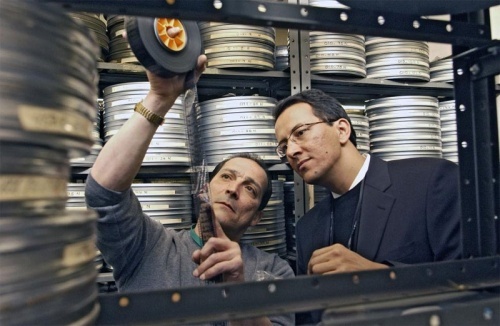
Preserving our audiovisual heritage, stressing the vulnerability of sound and film or video recordings to destruction and the need to pay greater attention to ensuring that they are properly saved for future generations has become a United Nations objective. Marking the “World Day for Audiovisual Heritage,” whose theme this year is ‘Audiovisual Heritage: See, Hear, and Learn,’ UNESCO noted that countless documentary treasures have been lost since the invention of image and sound technologies. Through the loss, the world lost some of its means of sharing experiences, creativity and knowledge. “Audiovisual records offer unique means of learning, sharing and becoming informed through sound and image,” according to UNESCO Director-General Irina Bokova.
As Education, History & Entertainment:
Audiovisual records offer unique means of learning, sharing and becoming informed through sound and image. “They are, in form and content, living testimonies to the history of technology, performance and culture. By presenting images and sounds from foreign cultures, historic moments shaping our collective memory, they contribute to cementing the foundations of intercultural dialogue and enriching humanity’s awareness,” according to Bokova. (See FILM REPORT – “UNESCO History & Mission” -
diplomaticallyincorrect.org/films/movie/unesco-historymission/26942 )
Celebrating “World Day for Audiovisual Heritage”:
In Nepal, the UNESCO office in the country held a round-table discussion on safeguarding Nepal’s audiovisual memory and a concert of traditional Nepali music in the capital, Kathmandu.
In the Namibian settlement of Tsumkwe, a selection of the John Marshall Ju/’hoan Bushman Film and Video Collection 1950-2000, which has been inscribed on UNESCO’s Memory of the World Register, was screened, as were sound and film archival material from the National Archives of Namibia.
At UNESCO headquarters in Paris, a public screening of short films selected from the agency’s audiovisual archives was held, with all the selected films featuring women characters.
The UN’s own audiovisual archive in New York will be open on the Day. It holds 80,000 hours of audio recording on 70,000 tapes and discs and 37,700 hours of film and video on 25,000 reels of film and 32,000 video tapes.
UN HQ Archive:
The archives, which received the 2004 International Documentary Association’s Preservation & Scholarship Award, have organized four guided tours for UN staff, delegates and accredited journalists. Visitors will be shown the archive vault and multimedia displays in the second basement of the General Assembly Building. The archives also contain 800,000 photos – 300,000 of which are outtakes that have not been digitized. Over 9,000 hours of audio and video and thousands of new photos are added every year. We express our thanks as well as congratulations to the Archive and “Team” for support/cooperation in our efforts to deliver the story(s) of the UN and its work. (IN PHOTO of Archive TEAM).
More FILM REPORTS at “Diplomat Artist” Channel -
diplomaticallyincorrect.org/c/diplomat-artist
By Ambassador Muhamed Sacirbey
Facebook – Become a Fan at “Diplomatically Incorrect”
Twitter – Follow us at DiplomaticallyX

